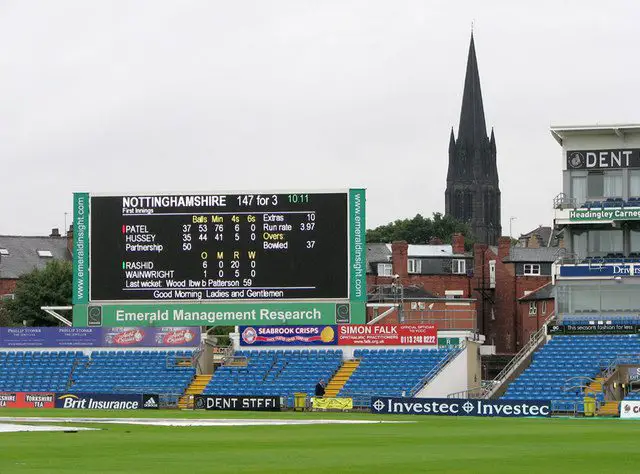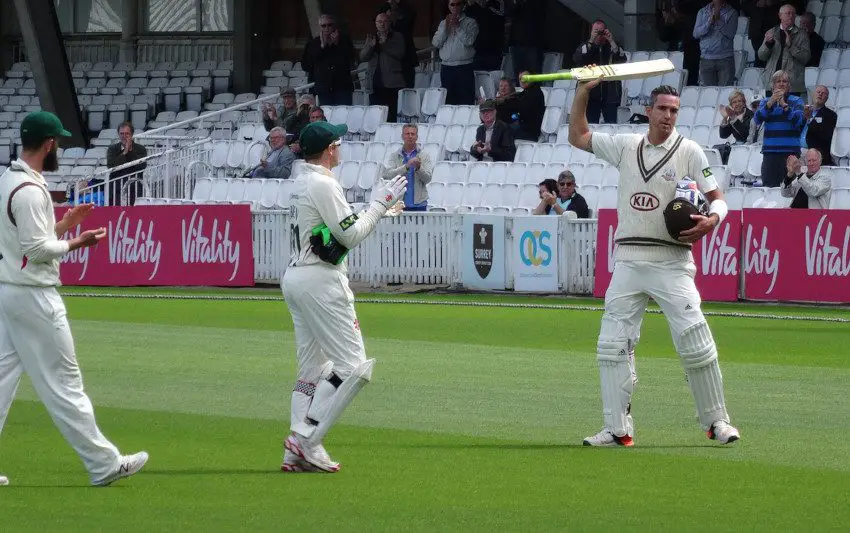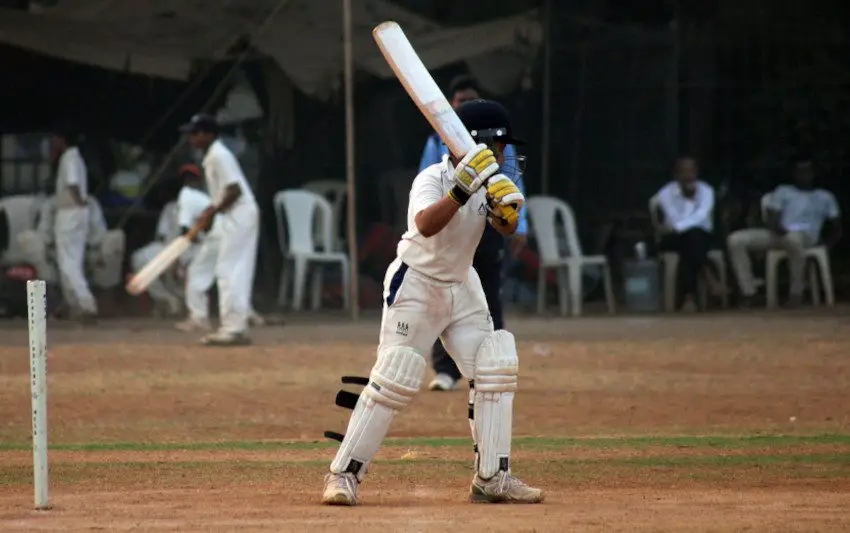Table of Contents
In this article I’m going to look at one of the more important statistics in cricket, so let’s consider the subject of run rate.
What is Run Rate in Cricket?
A run rate is the average number of runs that a batting side has scored in each over. Run rate takes the total runs scored and the overs bowled to work out a calculation.
Run rate is simply an average and the exact amount of runs scored in each over will differ.
How to Calculate RR in Cricket?
The calculation involves taking the amount of runs scored and dividing them by the number of overs bowled.
Here’s an example from a T20 game.
Let’s say that New Zealand have scored 212 runs from their 20 overs against South Africa.
212 divided by 20 = 10.6 runs per over. The run rate here is 10.6
Run rate can also be taken at any mid-point in the game. If, for example, New Zealand had scored 72 runs at the end of the six over Powerplay, the run rate at that stage would have been 12.00.

cc-by-sa/2.0 – © John Sutton – geograph.org.uk/p/1996113
Good Run Rate in Cricket?
Test Matches
Each of these sections will be open to interpretation and it should be remembered that the pace of the game is much faster in the modern era.
In test matches played today, a good run rate is considered to be somewhere between 3.5 and 4.
ODIs
The world record team score at the time of writing is the 498/4 made by England against the Netherlands in 2022. The run rate for that innings would have been 9.96.
That’s obviously an extreme example. A good ODI score in 50 overs is anything from 300 upwards so a good run rate in this format would be around 6.
T20
In T20 cricket, we see a number of scores exceed the 200 mark which would give us a minimum run rate of 10.
However, an average team score in this format could be 160 so a good run rate is generally considered to be around the 8 mark.
It should be noted that these are average figures and much will depend on the condition of the pitch. It could be fast and aid the batters, or it could be slow and difficult to score from.
Related Terminologies
Difference Between Economy Rate and Run Rate
The economy rate relates to the bowling side and, more specifically, to individual bowlers. If a bowler goes for 42 runs in ten overs in an ODI, we perform the following calculation.
42 divided by 10 = 4.2
The bowler’s economy rate is, therefore, 4.2.
Economy rates are important to bowlers. Those with a lower economy rate offer more value to their team.
What is Required Run Rate?
A required run rate is the number of runs per over that the side batting second will need to win the game.
Let’s say that Sri Lanka are chasing down a T20 target of 200 to win. After ten overs of their run chase, their score is 124. That leaves the Sri Lankans with 76 more runs to win with another ten overs at their disposal.
The calculation that follows is this one:
76 divided by ten = 7.6
Sri Lanka’s required run rate is, therefore, 7.6.
Net Run Rate vs Run Rate
Net run rate involves two separate calculations. They are the average number of runs scored by a batting team, minus the average number of runs that they have conceded.
Net run rate (NRR) is usually used across a tournament such as the Indian Premier League or the Big Bash League. At the end of the group stage, NRR is used to decide which team is placed higher in the table if they are tied on the same number of points.
We therefore take the teams’ total run rate over the course of all the group games. Then we deduct the bowling attacks’ economy rate across the same number of matches. Take away the economy rate from the run rate and we have our NRR.
Net run rates can sometimes show up as minus figures, usually when a team has lost more games than it has won.
Conclusion
Run rate is useful in a number of scenarios. Teams will look at average run rates on certain grounds and that helps them to understand what a par score should be. If they are batting first, they will look to reach that par score as a minimum and, hopefully, go above it.
Run rates have certainly increased in recent years and I would say that this is down to the introduction of T20 cricket. In such a short format of the game, teams can keep wickets in hand and take more risks with their batting.
That approach to the game has crossed over into One Day Internationals and we’re also seeing it in test cricket at times. In short, the game of cricket keeps evolving and increasing run rates are a good measure of that.


